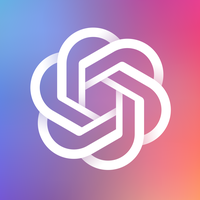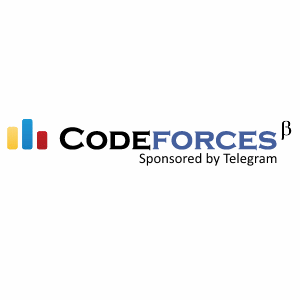OpenAI's o1 Models: A Leap into the Future of AI
September 14, 2024, 4:46 am

Location: United States, California, San Francisco
Employees: 201-500
Founded date: 2015
Total raised: $18.07B
OpenAI has taken a bold step forward. The tech giant has unveiled its new family of AI models, dubbed "o1." This move marks a significant shift from the anticipated GPT-5. Instead of following the familiar path, OpenAI has chosen to leapfrog into uncharted territory. The o1 models, particularly o1-preview and o1-mini, promise to tackle complex problems with a finesse that rivals PhD-level performance.
The o1-preview model is a game-changer. It is designed to think deeply, much like a human grappling with a tough question. This model doesn't just spit out answers. It ponders, refines, and crafts responses. It’s like a master chef, carefully selecting ingredients before serving a dish. This approach allows it to excel in challenging fields such as science, healthcare, and technology.
In practical terms, the o1-preview model has shown remarkable capabilities. It scored an impressive 83% on the International Mathematics Olympiad qualifying exam. This is a staggering leap from the 13% success rate of its predecessor, GPT-4o. It’s as if the o1-preview model has taken a quantum leap in understanding. In coding, it ranks in the 89th percentile on Codeforces competitions, showcasing its ability to debug and solve complex programming challenges.
The o1-mini model, while less powerful, is no slouch. It offers a cost-effective solution for developers and researchers. With an 80% lower price tag than o1-preview, it still delivers strong performance, particularly in math and programming tasks. On the same IMO benchmark, it scored 70%, nearly matching its more advanced sibling. This makes it an attractive option for those who need robust reasoning capabilities without the hefty price.
OpenAI has also prioritized safety with these new models. The o1 series incorporates advanced safety training, enhancing its ability to follow guidelines and avoid generating inappropriate content. In one of the toughest jailbreaking tests, o1-preview scored an impressive 84, a significant improvement over GPT-4o’s score of 22. This commitment to safety is crucial as AI continues to integrate into various sectors.
However, it’s essential to note that these models are still in their infancy. OpenAI has acknowledged that o1-preview and o1-mini are just the beginning. The company plans to roll out regular updates, adding features like web browsing and file uploads. Users can expect ongoing advancements as OpenAI continues to refine these models.
The launch of the o1 family reflects a broader trend in AI development. As the technology matures, the focus is shifting from mere generation to reasoning and problem-solving. This evolution is akin to moving from a basic calculator to a sophisticated computer capable of complex calculations and simulations. The o1 models are positioned to lead this charge.
OpenAI's decision to skip GPT-5 in favor of the o1 series raises questions about the future of AI. Are we witnessing the dawn of a new era? The o1 models suggest that the answer is yes. They represent a significant leap in capabilities, pushing the boundaries of what AI can achieve.
The applications for these models are vast. In healthcare, they could assist researchers in analyzing complex data sets. In physics, they might help scientists generate new mathematical formulas. The potential is enormous. OpenAI envisions a future where these models are integral to various fields, enhancing human capabilities and driving innovation.
As we look ahead, the implications of the o1 models extend beyond technical performance. They challenge our understanding of intelligence itself. If AI can think and reason like a human, what does that mean for the future of work, creativity, and problem-solving? The conversation around AI is evolving, and the o1 models are at the forefront of this dialogue.
In conclusion, OpenAI's launch of the o1 family is a watershed moment in AI development. With their advanced reasoning capabilities and commitment to safety, these models are set to redefine the landscape. As we embrace this new era, one thing is clear: the future of AI is bright, and the o1 models are leading the way. Expect more updates, more features, and more breakthroughs as OpenAI continues to push the envelope. The journey has just begun, and the possibilities are limitless.
The o1-preview model is a game-changer. It is designed to think deeply, much like a human grappling with a tough question. This model doesn't just spit out answers. It ponders, refines, and crafts responses. It’s like a master chef, carefully selecting ingredients before serving a dish. This approach allows it to excel in challenging fields such as science, healthcare, and technology.
In practical terms, the o1-preview model has shown remarkable capabilities. It scored an impressive 83% on the International Mathematics Olympiad qualifying exam. This is a staggering leap from the 13% success rate of its predecessor, GPT-4o. It’s as if the o1-preview model has taken a quantum leap in understanding. In coding, it ranks in the 89th percentile on Codeforces competitions, showcasing its ability to debug and solve complex programming challenges.
The o1-mini model, while less powerful, is no slouch. It offers a cost-effective solution for developers and researchers. With an 80% lower price tag than o1-preview, it still delivers strong performance, particularly in math and programming tasks. On the same IMO benchmark, it scored 70%, nearly matching its more advanced sibling. This makes it an attractive option for those who need robust reasoning capabilities without the hefty price.
OpenAI has also prioritized safety with these new models. The o1 series incorporates advanced safety training, enhancing its ability to follow guidelines and avoid generating inappropriate content. In one of the toughest jailbreaking tests, o1-preview scored an impressive 84, a significant improvement over GPT-4o’s score of 22. This commitment to safety is crucial as AI continues to integrate into various sectors.
However, it’s essential to note that these models are still in their infancy. OpenAI has acknowledged that o1-preview and o1-mini are just the beginning. The company plans to roll out regular updates, adding features like web browsing and file uploads. Users can expect ongoing advancements as OpenAI continues to refine these models.
The launch of the o1 family reflects a broader trend in AI development. As the technology matures, the focus is shifting from mere generation to reasoning and problem-solving. This evolution is akin to moving from a basic calculator to a sophisticated computer capable of complex calculations and simulations. The o1 models are positioned to lead this charge.
OpenAI's decision to skip GPT-5 in favor of the o1 series raises questions about the future of AI. Are we witnessing the dawn of a new era? The o1 models suggest that the answer is yes. They represent a significant leap in capabilities, pushing the boundaries of what AI can achieve.
The applications for these models are vast. In healthcare, they could assist researchers in analyzing complex data sets. In physics, they might help scientists generate new mathematical formulas. The potential is enormous. OpenAI envisions a future where these models are integral to various fields, enhancing human capabilities and driving innovation.
As we look ahead, the implications of the o1 models extend beyond technical performance. They challenge our understanding of intelligence itself. If AI can think and reason like a human, what does that mean for the future of work, creativity, and problem-solving? The conversation around AI is evolving, and the o1 models are at the forefront of this dialogue.
In conclusion, OpenAI's launch of the o1 family is a watershed moment in AI development. With their advanced reasoning capabilities and commitment to safety, these models are set to redefine the landscape. As we embrace this new era, one thing is clear: the future of AI is bright, and the o1 models are leading the way. Expect more updates, more features, and more breakthroughs as OpenAI continues to push the envelope. The journey has just begun, and the possibilities are limitless.
